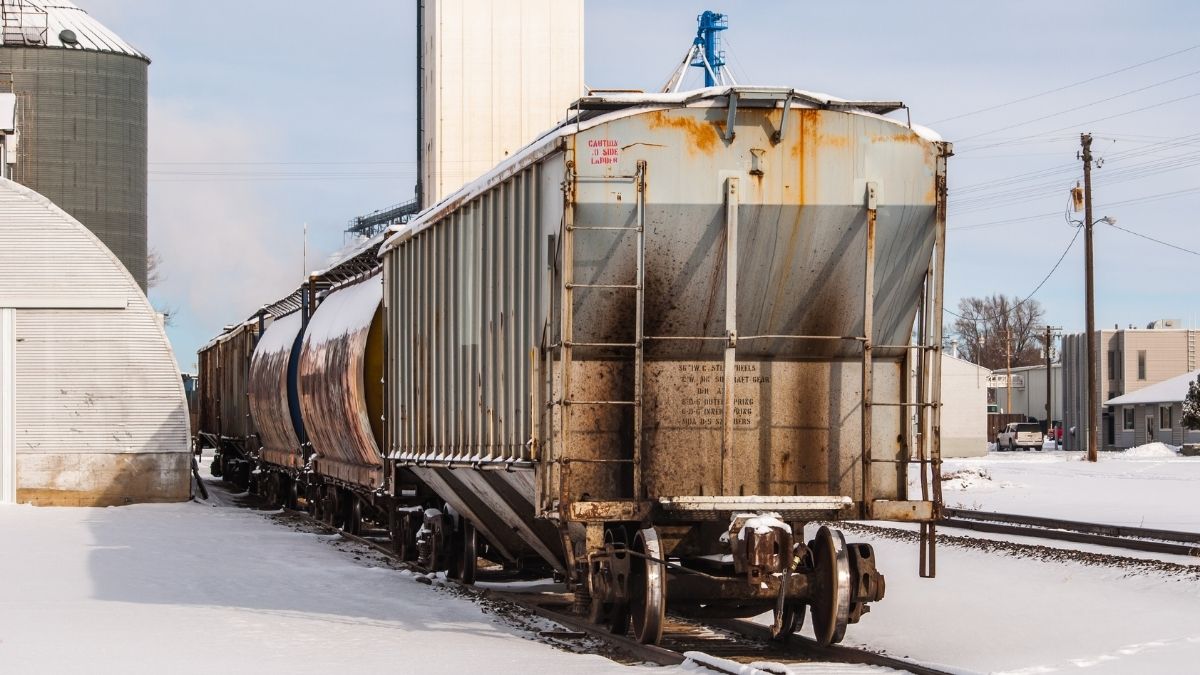Railcars are different from most other types of vehicles that workers will have to load or unload materials from. Rather than being attached to the car’s body, the axles of a railcar are placed on the truck and can move freely. While the weight of the car and its load keeps the railcar in place during transport, the process of loading and unloading materials can throw off its delicate balance and pose serious safety risks. To safely navigate the railcar unloading process, it’s important to be aware of the most common railcar unloading accidents so you can avoid them.
Falling From Substantial Heights
When unloading a railcar, workers may need to climb up the car’s ladder or on top of the car itself. In such a case, it’s important to be aware of the risk of slipping or tripping and falling from a high location. To minimize injuries and fatalities that occur as a result of falls when unloading railcars, it’s important for workers to follow proper safety protocol and maintain three points of contact at all times. In addition, OSHA-compliant passive and active fall protection systems such as guardrails or anchor points should be installed on the job site.
Getting Hit by Incoming Railcars
Another one of the most common railcar unloading accidents that occurs is getting hit by oncoming railcars. When unloading a railcar or waiting for a railcar to arrive, it’s important to stay extremely vigilant. When the axles of a railcar are well-lubricated, it can roll down a track relatively noiselessly. As such, workers may not hear it coming and could get hit. Thus, it’s critical to always remain aware of one’s surroundings and avoid standing, sitting, or walking on or between rails. If a worker has to cross tracks, they should always look both ways before crossing at a right angle.
Getting Crushed by the Car or the Load
As previously stated, the wheels on railcars are not attached to the car’s body. Thus, if the car’s balance is disrupted during the unloading process, there is a potential that it could tip over and crush a worker. To prevent the railcar from tipping over, it’s crucial to unload the contents of the car evenly. In addition, the car should be mechanically secured for optimum safety.










 Deering Estate
Deering Estate
 Massage Envy South Miami
Massage Envy South Miami
 Calla Blow Dry
Calla Blow Dry
 My Derma Clinic
My Derma Clinic
 Sushi Maki
Sushi Maki
 Sports Grill
Sports Grill
 The Healthy Kitchen
The Healthy Kitchen
 Golden Rule Seafood
Golden Rule Seafood
 Malanga Cuban Café
Malanga Cuban Café

 Kathleen Ballard
Kathleen Ballard
 Panter, Panter & Sampedro
Panter, Panter & Sampedro
 Vintage Liquors
Vintage Liquors
 The Dog from Ipanema
The Dog from Ipanema
 Rubinstein Family Chiropractic
Rubinstein Family Chiropractic
 Your Pet’s Best
Your Pet’s Best
 Indigo Republic
Indigo Republic




 ATR Luxury Homes
ATR Luxury Homes


 2112 Design Studio
2112 Design Studio
 Hamilton Fox & Company
Hamilton Fox & Company
 Creative Design Services
Creative Design Services
 Best Pest Professionals
Best Pest Professionals
 HD Tree Services
HD Tree Services
 Trinity Air Conditioning Company
Trinity Air Conditioning Company
 Cisca Construction & Development
Cisca Construction & Development
 Mosquito Joe
Mosquito Joe
 Cutler Bay Solar Solutions
Cutler Bay Solar Solutions


 Miami Royal Ballet & Dance
Miami Royal Ballet & Dance
 Christopher Columbus
Christopher Columbus
 Pineview Preschools
Pineview Preschools
 Westminster
Westminster
 Carrollton
Carrollton
 Lil’ Jungle
Lil’ Jungle
 Frost Science Museum
Frost Science Museum
 Palmer Trinity School
Palmer Trinity School
 South Florida Music
South Florida Music
 Pinecrest Orthodontics
Pinecrest Orthodontics
 Dr. Bob Pediatric Dentist
Dr. Bob Pediatric Dentist
 d.pediatrics
d.pediatrics
 South Miami Women’s Health
South Miami Women’s Health

 The Spot Barbershop
The Spot Barbershop
 My Derma Clinic
My Derma Clinic




 Miami Dance Project
Miami Dance Project

 Rubinstein Family Chiropractic
Rubinstein Family Chiropractic
 Indigo Republic
Indigo Republic

 Safes Universe
Safes Universe
 Vintage Liquors
Vintage Liquors
 Evenings Delight
Evenings Delight





 Atchana’s Homegrown Thai
Atchana’s Homegrown Thai
 Baptist Health South Florida
Baptist Health South Florida

 Laser Eye Center of Miami
Laser Eye Center of Miami
 Visiting Angels
Visiting Angels
 OpusCare of South Florida
OpusCare of South Florida

 Your Pet’s Best
Your Pet’s Best





 HD Tree Services
HD Tree Services
 Hamilton Fox & Company
Hamilton Fox & Company


 Creative Design Services
Creative Design Services